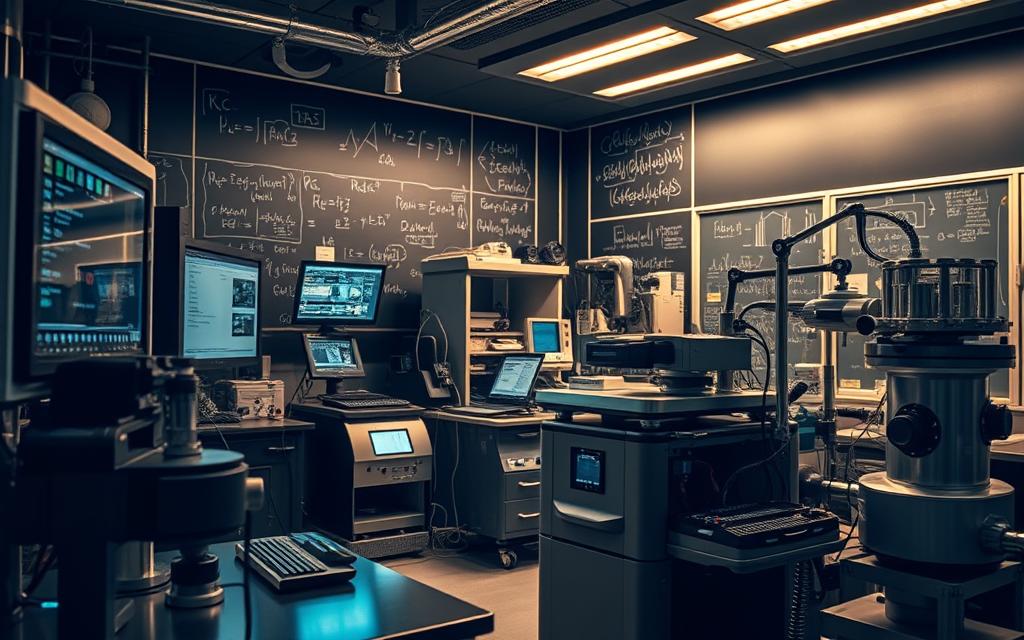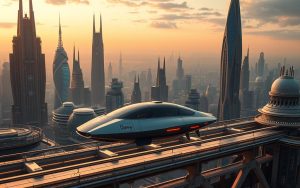The relationship between science and technology often sparks curiosity. Many wonder how these two fields connect and influence each other. This article aims to clarify their bond using simple, accessible language.
Throughout history, innovations like nuclear power and computers have showcased their interplay. Events such as World War II brought breakthroughs like the atomic bomb and radar, highlighting their combined impact.
The “pipeline model” of innovation, discussed in Vannevar Bush’s 1945 report, illustrates how scientific knowledge fuels technological progress. This model suggests that discoveries in one field often lead to advancements in the other.
Science and technology share an interdependent relationship, much like two DNA strands. They evolve together, each driving the other forward. Understanding this connection helps us appreciate their role in shaping the modern world.
For a deeper dive into their differences and similarities, check out this comparison of science and technology.
Introduction: Understanding the Relationship Between Science and Technology
The interplay between science and technology shapes modern advancements. While many believe innovation flows directly from pure research, this “pipeline model” is a misconception. Studies show only 5-10% of breakthroughs stem from initial conception or R&D.
Richard Nelson’s dual definition of technology clarifies its complexity. It includes both specific designs, like semiconductors, and broader generic knowledge. This duality highlights how practical applications often drive theoretical progress.
Robert Charpie’s 1967 study revealed that 40-60% of innovation effort goes into manufacturing preparation. This challenges the idea that breakthroughs happen solely in labs. Real-world implementation plays a critical role.
World War II success stories, like radar and the atomic bomb, created public misconceptions. These examples suggested that pure research alone leads to rapid advancements. In reality, collaboration between theory and practice was key.
MIT’s engineering science programs bridged this gap, blending theoretical research with practical applications. Small tech firms also contribute significantly, though their R&D efforts often go unmeasured.
The DNA strand metaphor captures their interdependence. Just as DNA strands twist together, science and technology evolve in tandem, each driving the other forward. This relationship is essential for societal progress.
Economic measurements, like R&D-to-GDP ratios, face limitations. They often overlook the broader impact of innovation on society. Understanding this complexity helps us appreciate their shared evolution.
Defining Science and Technology
Understanding the core definitions of science and technology reveals their profound connection. While they often overlap, each has distinct characteristics and purposes. Let’s explore these concepts in detail.
What is Science?
Science focuses on the systematic study of the physical and natural world. It relies on observation, experimentation, and peer-reviewed research to create knowledge. For example, Archimedes’ principles laid the groundwork for modern physics.
This discovery-driven field seeks to explain how the universe works. It’s not just about facts but also about the methods used to uncover them. Scientific knowledge is constantly evolving, shaped by new findings and theories.

What is Technology?
Technology applies knowledge to solve real-world problems. Richard Nelson’s 1992 definition highlights its dual nature: specific designs and broader generic knowledge. For instance, Roman aqueducts combined engineering principles with practical solutions.
Modern examples include semiconductor physics enabling microchips. Unlike pure research, technology is solution-oriented. It bridges the gap between theory and practice, often driving societal progress.
“Technology is not just about tools; it’s about the knowledge and processes that make innovation possible.”
| Aspect | Science | Technology |
|---|---|---|
| Focus | Discovery | Application |
| Method | Experimentation | Engineering |
| Outcome | Knowledge | Solutions |
Engineering science, as seen in MIT’s curriculum, exemplifies how these fields intersect. Ancient writing systems also show early attempts to organize knowledge, blending creativity with practicality.
By understanding their definitions, we gain a clearer view of how science and technology shape our world. Their synergy continues to drive innovation and progress.
The Historical Context of Science and Technology
From ancient tools to modern machines, the journey of innovation has shaped societies. The interplay between discovery and application has driven human progress for millennia. This section explores key milestones that highlight their shared evolution.
Early Developments
Humanity’s first steps in innovation began with simple tools. Around 2 million years ago, early humans crafted stone implements. By 75,000 years ago, pressure flaking refined these tools into sharper, more efficient blades.
Fire control, dating back 790,000 years, marked another leap. It not only provided warmth and protection but also influenced brain development and social structures. These early advancements laid the foundation for future engineering breakthroughs.
Medieval innovations, like the astronomical instruments of the Islamic Golden Age, showcased the blend of creativity and practicality. Ancient Mesopotamian irrigation systems also demonstrated early applied science, solving real-world challenges.
The Industrial Revolution
The 18th and 19th centuries brought transformative changes. The steam engine, rooted in thermodynamics, revolutionized transportation and manufacturing. It exemplified how scientific principles could drive technological progress.
Charles Babbage’s analytical engine in the 1840s foreshadowed modern computing. By 1947, the invention of the transistor marked a new era in electronics. These milestones highlight the continuous feedback loop between theory and practice.
World War II further accelerated this synergy. Radar development, for instance, showcased how scientific research could lead to practical military applications. The Space Race, with NASA’s Apollo program, later produced spinoff technologies that benefited society.
| Era | Key Development | Impact |
|---|---|---|
| Paleolithic | Stone tools | Basic survival and hunting |
| Medieval | Astronomical instruments | Advancements in navigation |
| Industrial Revolution | Steam engine | Transformed manufacturing |
| 20th Century | Transistor | Foundation of modern electronics |
These historical examples illustrate how science and technology have evolved together. Their shared history continues to shape our modern world, driving progress and innovation.
Is Technology a Part of Science?
Innovation thrives when theoretical knowledge meets practical solutions. This dynamic relationship between discovery and application has shaped human progress for centuries. Let’s explore how these fields interact and depend on each other.
Field-specific dependencies reveal fascinating insights. For instance, mechanical advancements often rely on foundational physics principles. In contrast, nuclear innovations demand deeper theoretical understanding. A study found that 73% of solid-state device developers held PhDs in non-solid-state physics, showcasing the interdisciplinary nature of progress.

The 1947 transistor development at Bell Labs exemplifies this synergy. While rooted in semiconductor physics, its practical applications revolutionized electronics. This breakthrough highlights how theoretical research can lead to transformative tools.
However, not all advancements require deep scientific understanding. Roman concrete, for example, was created without molecular science. Its durability and widespread use demonstrate how practical solutions can emerge independently of theoretical frameworks.
NIH biomedical research provides another perspective. Targeted basic science often drives medical breakthroughs, blending discovery with application. This approach underscores the importance of focused research in solving real-world problems.
“Engineering science bridges the gap between theory and practice, creating a hybrid discipline that drives innovation.”
MIT’s engineering programs exemplify this hybrid model. By combining theoretical research with practical applications, they foster advancements that shape industries. This approach ensures that discoveries translate into tangible solutions.
The DNA metaphor captures their interdependence. Like intertwined strands, these fields evolve together, each driving the other forward. Nelson-Rosenberg’s interaction models further illustrate this complex relationship, emphasizing their mutual influence.
Brooks’ “black box” R&D misconception challenges the idea that innovation happens in isolation. In reality, collaboration between researchers and practitioners is essential for breakthroughs. This perspective reshapes how we view the innovation process.
| Field | Dependency on Science | Example |
|---|---|---|
| Mechanical | Moderate | Steam engine |
| Nuclear | High | Atomic energy |
| Biomedical | Targeted | NIH research |
Understanding this intricate bond helps us appreciate how discoveries and applications shape our world. Their shared evolution continues to drive progress, ensuring a brighter future for all.
The Contributions of Science to Technology
Scientific breakthroughs have paved the way for countless technological advancements. From medical imaging to aerospace engineering, research has consistently driven innovation. This section explores how scientific discovery fuels progress and shapes the tools we use today.

New Knowledge and Technological Possibilities
Many modern tools owe their existence to foundational physics principles. For instance, MRI machines originated from particle research on superconducting magnets. This scientific discovery transformed medical diagnostics, offering non-invasive imaging solutions.
Lasers are another example. Initially a theoretical concept, they now power barcode scanners, surgical tools, and communication systems. This evolution highlights how theoretical knowledge can lead to practical applications.
Nuclear fission showcases dual-use development. It powers energy plants while also influencing defense systems. Such advancements underscore the profound impact of research on diverse industries.
Engineering Design Tools and Techniques
Engineering relies heavily on scientific methods to solve complex problems. Computational fluid dynamics, for example, optimizes aircraft design by simulating airflow. This approach reduces costs and improves safety.
Finite element analysis is another critical tool. It helps engineers create earthquake-resistant structures by modeling stress and strain. These methods demonstrate how science enhances practical solutions.
“The synergy between science and engineering drives innovation, creating tools that shape our world.”
Phase-shift lithography is a prime example. This technique enables the production of nanochips, powering modern electronics. It combines theoretical physics with precise engineering, showcasing their interdependence.
| Field | Scientific Contribution | Technological Application |
|---|---|---|
| Medical | Superconducting magnets | MRI machines |
| Electronics | Semiconductor physics | Microchips |
| Aerospace | Fluid dynamics | Aircraft design |
For more insights into how research influences industrial progress, explore this detailed analysis.
The Impact of Technology on Science
The synergy between discovery and application reshapes scientific inquiry. Advanced tools and methods have transformed how we explore the universe and solve complex problems. This section highlights how innovation drives progress in various fields.
Novel Scientific Questions
Breakthroughs in instrumentation often lead to new questions. For example, the Hubble Space Telescope expanded our understanding of cosmology by capturing distant galaxies. Similarly, CERN’s Large Hadron Collider required cutting-edge detector systems to explore particle physics.
CRISPR gene editing, inspired by bacterial defense mechanisms, has revolutionized genetics. It allows precise modifications to DNA, opening doors to potential cures for genetic disorders. These advancements show how techniques can redefine scientific boundaries.
Advanced Instrumentation and Techniques
Modern tools have accelerated research across disciplines. PCR machines, for instance, enable rapid genetic analysis, speeding up discoveries in medicine. Electron microscopy has transformed virology by providing detailed images of viruses.
Cloud computing plays a crucial role in climate modeling. It processes vast amounts of data, helping scientists predict environmental changes. fMRI has revolutionized neuroscience by mapping brain activity in real-time.
- PCR machines: Accelerate genetic research.
- Cloud computing: Enhances climate modeling.
- CRISPR: Enables precise gene editing.
- Large Hadron Collider: Advances particle physics.
- Electron microscopy: Revolutionizes virology.
- Citizen science platforms: Engage the public in research.
- fMRI: Transforms neuroscience.
- Blockchain: Ensures data integrity in research.
“Innovation in instrumentation and techniques drives scientific progress, unlocking new possibilities for discovery.”
These examples illustrate how technology and computer science work hand-in-hand with research to push the boundaries of knowledge. Their combined impact continues to shape the future of science.
Modern Applications of Science and Technology
Advancements in computing and biotechnology have reshaped the modern world. From groundbreaking innovations in information technology to life-saving breakthroughs in biotechnology, these fields continue to drive progress. Let’s explore how they impact our lives today.

Information Technology
The evolution of computer systems has been remarkable. From ENIAC in 1946 to modern quantum computing, processing power has grown exponentially. Moore’s Law predicted this growth, but quantum breakthroughs are pushing boundaries even further.
Neural networks now assist in medical diagnostics, analyzing complex data with precision. 5G networks enable remote surgeries, connecting doctors and patients across the globe. Blockchain ensures transparency in pharmaceutical supply chains, safeguarding public health.
- Quantum computing: Revolutionizing data processing.
- Neural networks: Enhancing medical diagnostics.
- 5G networks: Enabling remote surgeries.
- Blockchain: Securing supply chains.
Biotechnology
Biotechnology has transformed healthcare and agriculture. The 1978 recombinant DNA breakthrough paved the way for mRNA vaccine development. These vaccines, like those for COVID-19, have saved millions of lives.
Precision agriculture uses IoT sensors to optimize crop yields, reducing waste. Gene drives aim to prevent malaria by altering mosquito populations. Biodegradable plastics from algae research offer sustainable alternatives to traditional materials.
“Biotechnology bridges the gap between science and real-world solutions, addressing global challenges.”
- mRNA vaccines: Rapid response to pandemics.
- Precision agriculture: Optimizing crop production.
- Gene drives: Combating malaria.
- Biodegradable plastics: Reducing environmental impact.
These applications demonstrate how science and technology work together to solve pressing issues. Their combined impact continues to shape the world, offering hope for a better future.
The Societal Impact of Science and Technology
Science and technology have profoundly shaped modern society, influencing every aspect of daily life. From healthcare to communication, their advancements have created both opportunities and challenges. This section explores their impact on economic growth and environmental concerns, highlighting key developments and ongoing problems.
Economic Growth
Between 1990 and 2010, technological advancements contributed to 20% of global GDP growth. This surge transformed industries, creating new jobs and boosting productivity. The Green Revolution, for instance, revolutionized agriculture, increasing crop yields and reducing hunger.
Renewable energy sectors have also driven economic growth. Solar panel costs dropped from $100 per watt in 1975 to just $0.20 in 2023, making clean energy more accessible. This shift has created millions of jobs worldwide, from manufacturing to installation.
- Green Revolution: Enhanced agricultural productivity.
- Renewable energy: Created millions of jobs globally.
- Automation: Led to a skills gap in traditional industries.
“The integration of technology into economies has reshaped industries, fostering innovation and growth.”
Environmental Concerns
While science and technology drive progress, they also pose environmental concerns. E-waste management has become a critical issue, with millions of tons of discarded electronics polluting landfills. Circular economy innovations aim to address this by promoting recycling and reuse.
Marine problems are another focus. Blue economy technologies, like sustainable fishing and ocean cleanup systems, aim to protect marine ecosystems. Renewable energy solutions, such as wind and solar, reduce reliance on fossil fuels, mitigating climate change.
| Issue | Solution |
|---|---|
| E-waste | Circular economy innovations |
| Marine pollution | Blue economy technologies |
| Climate change | Renewable energy systems |
These efforts highlight the dual role of science and technology in addressing environmental concerns while fostering economic growth. Their impact on society continues to evolve, shaping a sustainable future.
The Future of Science and Technology
The future holds transformative potential for innovation and discovery. Emerging advancements are reshaping industries, healthcare, and daily life. From quantum computing to synthetic biology, these breakthroughs promise to solve complex challenges and improve quality of life.
Emerging Technologies
Quantum internet is revolutionizing data security, offering unprecedented protection for sensitive information. Fusion energy, with progress like the W7-X stellarator, could provide clean, limitless power. Neuromorphic computing mimics the human brain, enabling faster and more efficient systems.
Mars colonization efforts focus on life support systems, ensuring sustainability in harsh environments. Synthetic biology addresses climate change by creating eco-friendly materials and biofuels. These innovations highlight the potential of science to tackle global issues.
The Role of Artificial Intelligence
AI is transforming industries and reshaping the workforce. According to the World Economic Forum, AI will create a net gain of 97 million jobs by 2025. However, MIT studies show that robotics and automation may impact wages, requiring new skills for workers.
AI’s applications are vast. AlphaFold, for instance, predicts protein structures, accelerating drug discovery. Explainable AI (XAI) enhances medical diagnostics, providing transparent and reliable results. Ethical concerns, like facial recognition biases, are also being addressed to ensure fair and responsible use.
“AI’s potential lies in its ability to augment human capabilities, not replace them.”
| Technology | Impact |
|---|---|
| Quantum Internet | Enhanced data security |
| Fusion Energy | Clean, limitless power |
| Neuromorphic Computing | Efficient brain-like systems |
| AI in Medicine | Accelerated diagnostics |
These advancements demonstrate how science and technology are intertwined, driving progress and shaping the future. Their combined impact continues to redefine possibilities, offering solutions to some of the world’s most pressing challenges.
Conclusion: The Inseparable Connection Between Science and Technology
The bond between discovery and innovation continues to shape human progress. Like intertwined DNA strands, science and technology evolve together, each driving the other forward. From the transistor’s development to AI’s transformative potential, their synergy has redefined industries and improved lives.
Policy decisions play a crucial role in fostering this connection. Increased R&D funding ensures that breakthroughs translate into practical solutions. Education also bridges the gap, equipping future generations with the knowledge to maintain this synergy.
Emerging fields like CRISPR and quantum computing highlight the next frontier. Their combined potential could solve global challenges, from healthcare to climate change. However, ethical considerations must guide their development to ensure responsible innovation.
Ultimately, human creativity remains the driving force behind progress. By fostering balanced ecosystems that value both discovery and application, we can continue to harness the power of science and technology for a better future.







